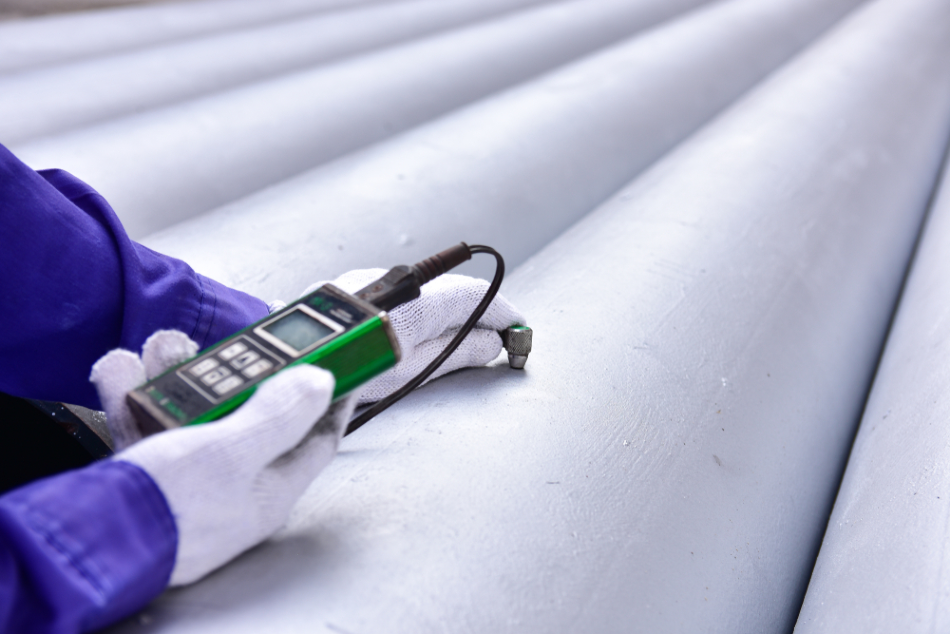
Image Credit: Tum ZzzzZ/Shutterstock.com
Surface area is a measure of the entire area that the surface of a specific object occupies. While simple geometric formulae for calculating the surface area of ideal three-dimensional shapes are taught in high school mathematics classes, measuring the surface area of real-world objects made of materials that are not ideally smooth is an advanced – yet important – field of study.
Accurate surface area measurement of real-world objects and materials is important in several industries and research areas, including:
- Development and study of industrial catalysts and their applications in chemical manufacture
- Development of zeolite minerals and their applications in water purification
- Nuclear waste processing and refrigeration
- Synthesis of metal-organic frameworks (MOFs) and their applications in carbon capture and drug delivery
- Artificial bone development for surgical purposes
- New battery materials and techniques
- Metal powders for additive manufacturing (3D printing)
What is a Specific Surface Area?
The specific surface area of an object is defined as its total actual surface area (including the deviations from ideal smoothness found in all materials) per unit of mass or volume. It is given in units of m2/kg or m2/g, or m2/m3 or m-1, depending on whether it is measured by mass or volume respectively.
A solid’s specific surface area is a value that can provide information about a material’s properties and even distinguish the type of material being measured. Measuring this value is an essential step in understanding the ways in which elements will interact with various chemical and physical stimuli, as well as providing unique physical information used to isolate materials and identify defects in their manufacture.
How to Measure Surface Area
The most common surface area measurement technique relies on the adsorption of gas molecules on a solid surface, and is referred to as BET measurement. BET measurement relies on the Brunauer–Emmett–Teller (BET) theory of adsorption put forward in 1938 by a chemist, chemical engineer, and physicist in the United States: Stephen Brunauer, Paul Hugh Emmett, and Edward Teller.
Adsorption – not to be confused with absorption – is a surface phenomenon in which gas, liquid, or dissolved solid molecules (adsorbents) adhere to a solid surface (adsorbate) in a film layer. Like surface tension, adsorption is caused by the surface energy of the adsorbate material – the extra energy among molecules and intermolecular bonds on a surface compared with internal bulk, which seals the material in one solid object.
In the BET method for measuring specific surface area, a gas that is not chemically reactive with the solid material is used to probe the material and provide the required information. The number of gas molecules that adhere to the solid adsorbate as adsorbents are determined by gas pressure, ambient temperature, the kind of gas and – importantly – the size of the solid’s surface area. Controlling the other factors – pressure, temperature and adsorbent gas – leaves one variable which can be measured: surface area.
The most common adsorbent used in BET analysis is nitrogen (N2-BET analysis), which is in liquid form at nitrogen’s boiling temperature (77 K). While this is the standard BET analysis method, other adsorbents can be used at their respective boiling temperatures in order to measure surface area at different temperatures and measurement scales. These include water, carbon dioxide, and argon.
Krypton is used in K-BET analysis, for example, to measure specific surface areas of materials with very small imperfections or pores. This is due to the smaller size of krypton molecules compared to nitrogen molecules.
BET Method Dominates
The BET method for surface area measurement is widespread and forms the basis of many standard measurements in science and metrology (the science of measurement) in particular. The BET method is the basis for the ISO 9277 standard for calculating specific surface area.
References and Further Reading
Brunauer, S., Emmett, P.H. and Teller, E. (1938). Adsorption of Gases in Multimolecular Layers. Journal of the American Chemical Society, 60(2), pp.309–319.
ISO 9277:2010. [Online] ISO. Available at: https://www.iso.org/standard/44941.html.
Disclaimer: The views expressed here are those of the author expressed in their private capacity and do not necessarily represent the views of AZoM.com Limited T/A AZoNetwork the owner and operator of this website. This disclaimer forms part of the Terms and conditions of use of this website.